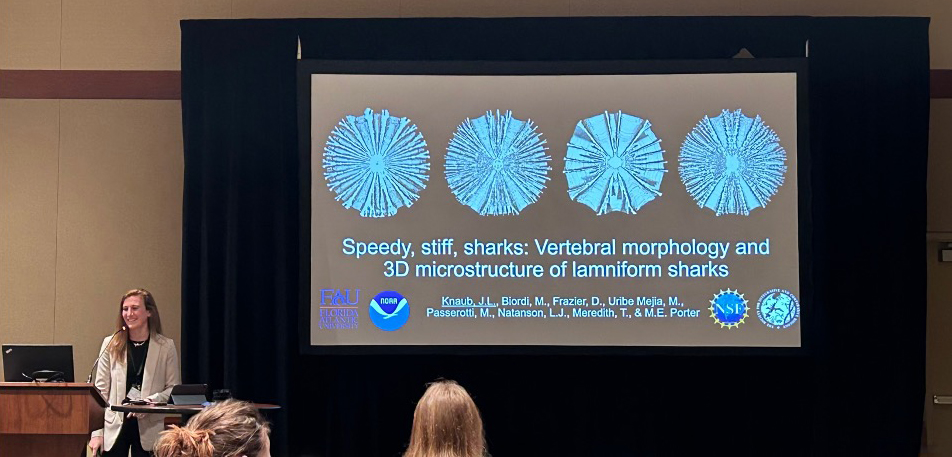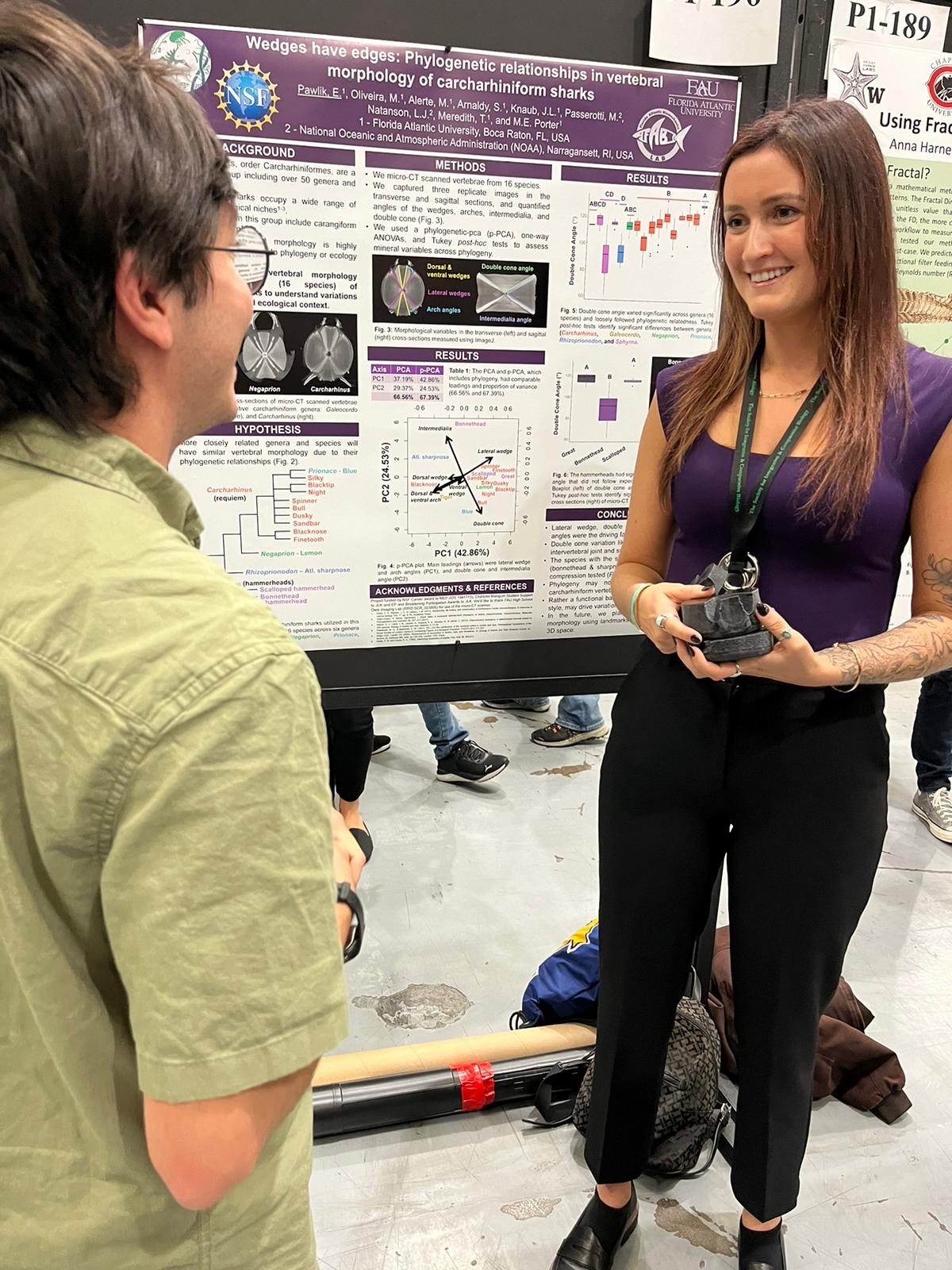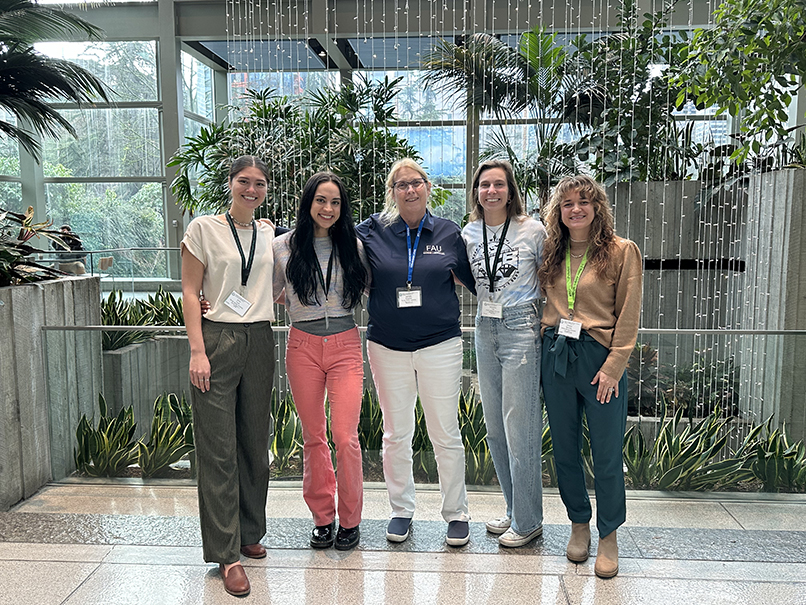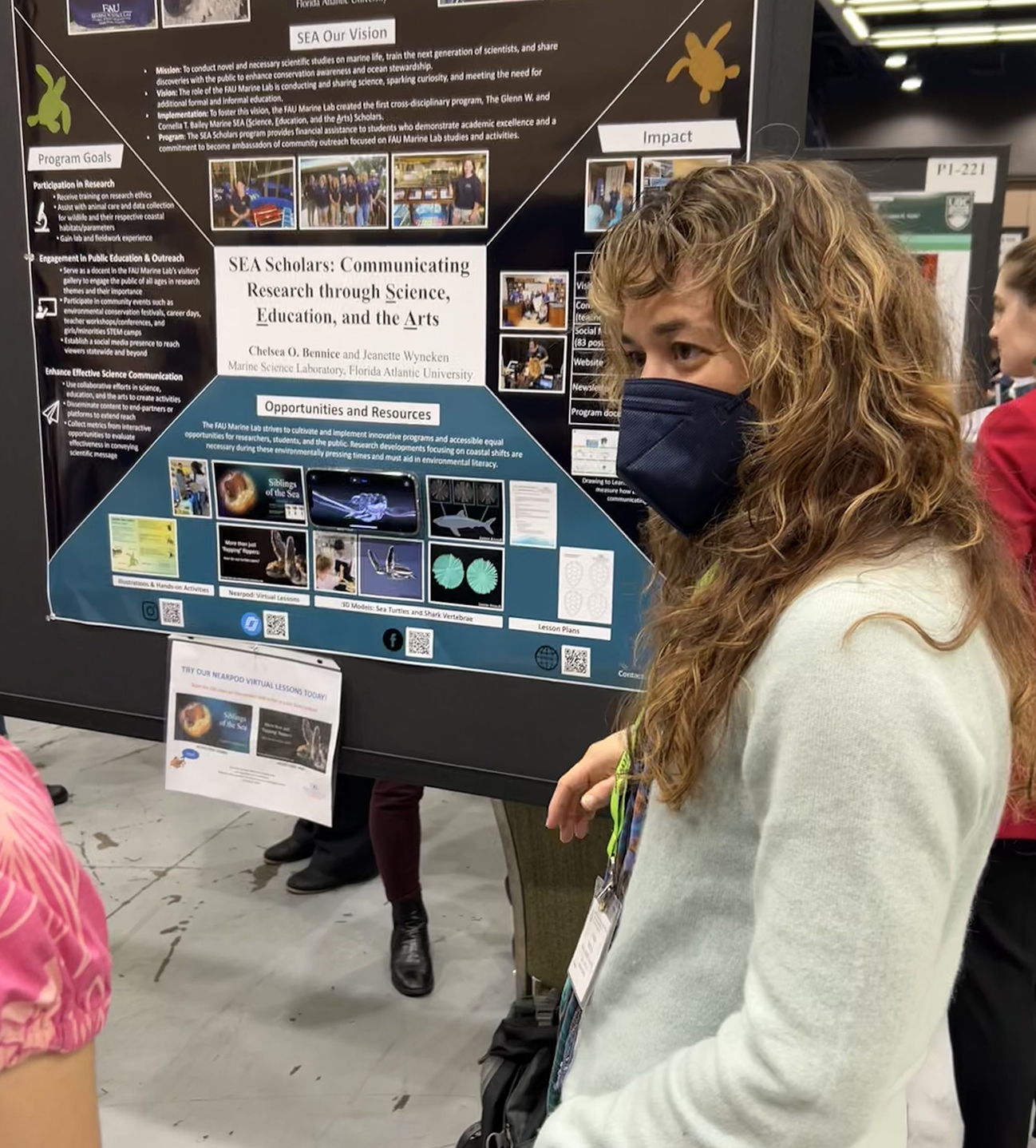
Scientists to Seattle for SICB Science Conference 2024
Author: Sam Trail
Date: January 28, 2024
To kick off the new year, several thousand scientists flocked to Seattle, Washington for the Society for Integrative and Comparative Biology (SICB) meeting. This is one of the largest annual meetings on record! SICB 2024 featured over 2000 presentations, 15 workshops, and 11 world-class symposia. Our FAU Marine Lab scientists were among the many researchers that made the trek to the Pacific Northwest to share their groundbreaking work! Read about each of their presentations below.

Dr. Marianne Porter kept quite busy in her role as SICB’s Secretary-Elect. Members of her Florida Atlantic Biomechanics (FAB) Lab presented descriptions of their studies spanning topics ranging from speedy sharks and flexible vertebral columns, to shark noses and the mechanical properties of ray skin! Read a bit about their presentations here:
- Ph.D. Candidate, Jamie Knaub, took a closer look at the shape, or architecture, of the vertebral column of the speediest sharks, finding that more lamellae (radiating plates of mineralized cartilage) in stiffer, posterior vertebrae may help propel faster swimming! Jamie was also the recipient of SICB’s Stephen A. Wainwright Student Research Award – way to go, Jamie!
- Undergraduate researcher, Emma Pawlik, knows the vertebral columns of sharks come in all different shapes and sizes! Although shark vertebrae exhibit the same basic “double cone” structure as mineral wedges, they take on a variety of forms (ex – different wedge angles). Emma found that those similarities and differences are likely the result of functional or ecological need, such as swimming style, rather than how closely related shark species are.
- Postdoctoral Fellow, Lauren Simonitis, presented ‘Flowing Your Nose!’, using a variety of biological imaging methods to uncover the correlation between how water flows through different shark noses and the location and concentration of the sensory tissue in those smelling structures.
- Ph.D. Candidate, Madeleine Hagood
, is among the first to look at the strength and extensibility, or stretchiness, of ray skin! Some rays have dermal denticles (tooth-like armor on their skin) - a characteristic they share with their shark relatives. Madeleine found that the strength and stretchiness of ray skin was related to denticle concentrations and swimming styles (ex – flapping vs. undulating).

Dr. Jeanette Wyneken
, Director of the FAU Marine Lab, and many of her students and collaborators, also presented their research at SICB! Brief descriptions are given below:
- Dr. Wyneken compared skull shape and foraging behavior between hawksbill and green sea turtles. Despite both consuming algae growing on hard surfaces located in shallow reefs in Hawaii, their jaw shapes and optimal feeding sites differed. Hawksbills have long, narrow heads and V-shaped jaws, optimal for removing algae lodged in reef crevasses; while green turtles have blunt, rounded heads with U-shaped jaws, optimal for scraping algae away from flat surfaces.
- Postdoctoral Fellow of the Glenn W. and Cornelia T. Bailey Marine SEA Scholars program, Chelsea Bennice, gave two wonderful presentations at the conference! She spoke about ‘Octopus Skincare,’ highlighting the unique skin microbiome of two tropical octopuses that vary significantly in their ecology. Dr. Bennice also described how the GW&CTB Marine SEA Scholars Program trains students to optimally communicate their science to interested parties and all the group accomplished in 2023.
- Ph.D. Candidate, Ivana Lezcano, demonstrated that the shell or ‘Protective Shield’ of sea turtles is much more flexible than those of their freshwater and terrestrial counterparts. Among sea turtles, the shells of juveniles appear to be more compliant than adults’, and variation also exists between different sea turtle species. The differences are also found in species-specific microstructure (architecture), suggesting that not all shells “are created equally.”
- Ph.D. Candidate and FAU Marine Lab Coordinator, Emily Turla, is investigating the importance of two sources of leatherback egg failure: infertility, or a failure of fertilized embryos to complete development. Using a variety of techniques, Emily was able to detect embryonic cells and/or the presence of sperm in unhatched eggs, demonstrating that the fertility rate is high but problems in development are persistent in leatherback nests incubating in southeastern Florida.
- Ph.D. Candidate and Marine SEA Scholar, Sam Trail, analyzed the frenzy swimming patterns of leatherback, loggerhead, and green sea turtle hatchlings. She describes how flipper shape, size, and maximum force production vary among these species, suggesting that those differences may reflect functional contrasts in speed, maneuverability, and locomotion adaptations in the different habitats where they are found. Similar functional contrasts are well known in fishes.
- MS student and Marine SEA Scholar, Colleen Hecker, could not attend the meeting in person, but her poster on the cryptic species of common octopus was of interest to many colleagues. In it, she asks whether there is one species of octopus found in many different areas, or many similar looking (cryptic!) species that appear identical to the untrained eye? Colleen is unraveling the evidence that supports the ‘Octopus vulgaris Species Complex hypothesis.’
Our slew of scientists is already looking forward to the next SICB 2025 meeting, scheduled to take place in Atlanta, Georgia!




